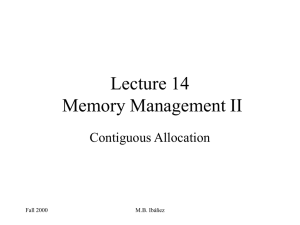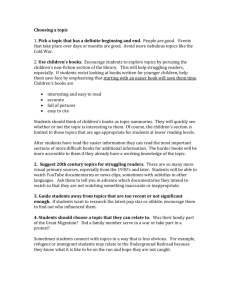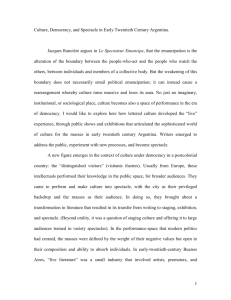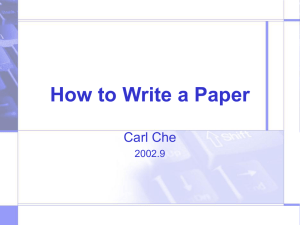Museum-House Blasco Ibáñez, Valencia
advertisement
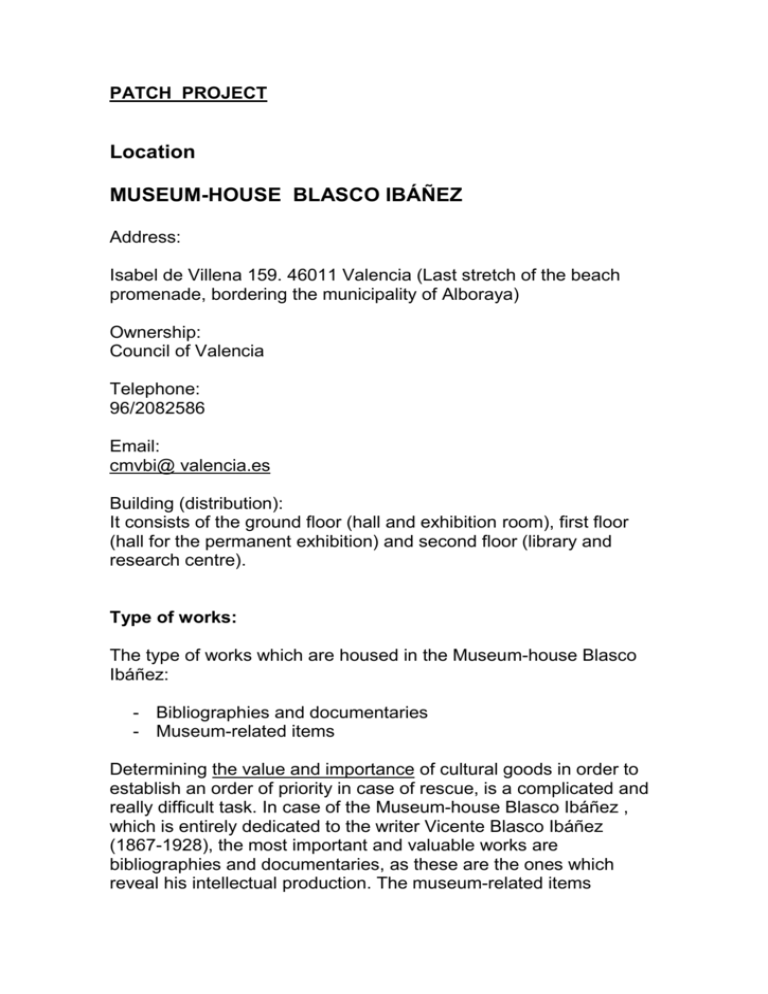
PATCH PROJECT Location MUSEUM-HOUSE BLASCO IBÁÑEZ Address: Isabel de Villena 159. 46011 Valencia (Last stretch of the beach promenade, bordering the municipality of Alboraya) Ownership: Council of Valencia Telephone: 96/2082586 Email: cmvbi@ valencia.es Building (distribution): It consists of the ground floor (hall and exhibition room), first floor (hall for the permanent exhibition) and second floor (library and research centre). Type of works: The type of works which are housed in the Museum-house Blasco Ibáñez: - Bibliographies and documentaries - Museum-related items Determining the value and importance of cultural goods in order to establish an order of priority in case of rescue, is a complicated and really difficult task. In case of the Museum-house Blasco Ibáñez , which is entirely dedicated to the writer Vicente Blasco Ibáñez (1867-1928), the most important and valuable works are bibliographies and documentaries, as these are the ones which reveal his intellectual production. The museum-related items collected in the Museum-house Blasco Ibáñez are comprised by a great variety of goods linked to the novelist and his family, such as furniture, ceramics, sculptures, oil paintings, engravings, jewelry, personal objects, awards and acknowledgements, decorative elements, etc. With respect to the position of the a.m. funds in the Museum-house Blasco Ibáñez, the collections of bibliographies and documentaries are mostly kept in the library on the second floor of the building, although some manuscripts are shown to the public in the exhibitions on the ground floor and the first floor. The bibliographies, most of them monographs, are also on the second floor in wooden shelves with metal-grated doors. The documentaries (manuscripts and forms) are stored in wooden or metal pieces of furniture, especially designed for all the documentation, except for three complete manuscripts of Blasco Ibáñez´s works. Due to their size, they do not fit into this piece of furniture and are therefore kept in a wooden cupboard with a key, together with a collection of photographic glass. As for the museum-related items, the vast majority is exhibited to the public, distributed between the ground floor and the first floor. Because of its importance it is interesting to highlight the collection of engravings by Rembrandt and the furniture in the office of the newspaper El Pueblo, founded by Blasco. Vulnerability of the mentioned goods: The vulnerability of the goods is greatly dependent on their base material. The organic materials are much more vulnerable to water and fire, whereas inorganic material is more resistant. Bibliographies and documentaries. Material: wood. Museum-related items (furniture, paintings, engravings, varied objects such as jewelry, ceramics, etc.). Diversity of materials: wood, canvases, paper, ceramics, metals, etc. Security measures to rescue the goods: In case of an earthquake: The published bibliography about protection of cultural goods in case of disasters caused by different agents (fire, water, earthquakes, etc.) emphasizes the fact that prevention is the best formula to avoid losses or to mitigate damage. Thus, preventive measures are the best thing to salvage the cultural heritage. In this sense, it is essential to have the confection and implementation of an adequate Emergency Plan available, as well as the correct preparation of the installations in the building and staff training. Along with this, an updated Inventory of the guarded goods is necessary, with one or several copies both in this building and in other secure centres. After the earthquake. Rescue of the goods. If an earthquake takes place, the saving of human lives is paramount. Once this is guaranteed, the priority is to rescue the updated inventory of goods and the protection of affected objects in case the seismic movements repeat, or due to their direct consequences like fire, flooding or looting of works of art. Once the rescue of the inventory and the protection of goods is secured, it would be convenient to relocate the funds to a safer place. The order of relocation should respect the priority of importance of the goods, although this criterion is very relative, since a great part of the building might be inaccessible after an earthquake. Rescue of the goods in the Museum-house Blasco Ibáñez: Order of priority: 1.) Documentaries: Due to their unique and unrepeatable condition, all of Blasco Ibáñez´s manuscripts and personal documents, especially the complete manuscripts of El Intruso (The Intruder) and La Catedral (The Cathedral), as well as the complete mecanoscript of Los cuatro jinetes del Apocalipsis (The four horsemen of the Apocalypse). 2.) Bibliographies: The first editions and luxury editions of Blasco Ibáñez´s novels. The remaining editions can be more easily recuperated. 3.) Museum-related items. Precautions: Both for the bibliographies and the documentaries made out of paper, and for the museum-related objects of different materials (wood, stone, metal, etc.), it is necessary to avoid humidity in order to impede water causing distortions in certain materials. Also the proliferation of microorganisms which could affect them, have to be prevented. Therefore, it is essential to start relocating the goods to an appropriate place, with adequate conditions of humidity and temperature, cleaning properly all the material and drying the pieces or collections if required. Fragments or parts of certain works might have to be consolidated and set up. It´s necessary to register or make an inventory of all the recovered goods or fragments, as well as the above mentioned. In case of the Museum-house Blasco Ibáñez, as it is a building close to the coast, there is a risk of damages caused by sea water, the effects of which are similar to flooding caused by sweet water, but the chemical reactions are more harmful for some collections. For the rescue and relocation of the collections it would be suitable to have a stock of necessary materials and supplies.
